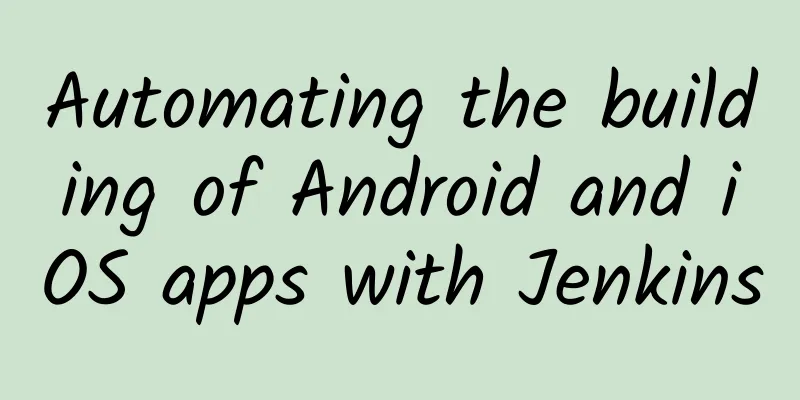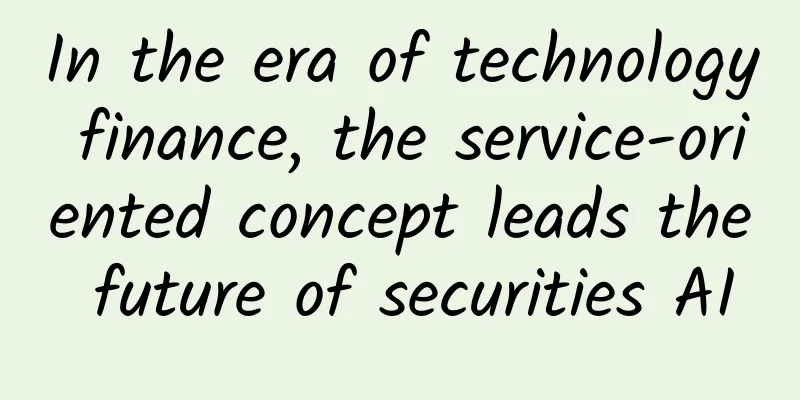Automating the building of Android and iOS apps with Jenkins

|
background As business needs evolve, the complexity of engineering will gradually increase, and the practice of automation will become increasingly strong. In fact, engineering automation has always been our goal, which can effectively improve our production efficiency, minimize the probability of human errors, and achieve some complex business needs. The scenario is as follows: every time the company's testers need to test a new version, they need the developers to package it and put it on FTP. The testers then copy it from FTP to the local computer (or use the ES file manager on the phone) and install it. Especially in the week leading up to the release, a new version is required almost every day. This has two effects: first, it interrupts the development progress of the developers; second, the developers' packaging efficiency is low, especially for iOS. If things go wrong, they will always be packaged incorrectly (probably due to certificate issues). To solve this problem, we must realize the automated construction of mobile applications. Specifically, we use the continuous integration (CI) system Jenkins to automatically detect and pull the latest code, automatically package the Android apk and iOS ipa, and automatically upload them to the internal test distribution platform Dandelion. (Next, the tester only needs to open one (or more) fixed URLs and scan the QR code to download the latest version...) environment Because you want to compile iOS, choose Mac OSX 10.11.1. Regardless of the operating system, the Jenkins configuration is the same. Install Jenkins Official website address: http://jenkins-ci.org/
By default, visit http://localhost:8080/ to enter the Jenkins configuration page. Install Jenkins related plugins Click System Management > Manage Plugins > Optional Plugins to search for the following plugins to install
Create a new job On the main page, click New->Build a free-style software project. For similar projects, you can select -> Copy Existing Item. Enter the first character of the other job in the task name to be copied and there will be an intelligent prompt. Configure git repository If the git plug-in is installed, Git will appear in the source code management. After selecting it: Repositories -> https://github.com/openproject/ganchai, if it is ssh, you also need to configure Credentials. Branch -> */master, select a branch code to compile. as follows: If it is a private repository (such as git://xxxxx.git), click Credentials – Add, a dialog box pops up, and it is easiest to configure sshkey: Configure automatic pull of *** code In the build trigger, there are two strategies for automatically pulling code and compiling: 1. Set Poll SCM, set a timer, check for code updates regularly, compile if there are updates, otherwise do not compile (I am using this for now). 2. You can also set Build periodically to execute compilation tasks periodically. Regarding the format of the timer, I can only quote a slightly more reliable description from the Internet: This field follows the syntax of cron (with minor differences). Specifically, each line consists of 5 fields separated by TABor whitespace: MINUTE HOUR DOM MONTH DOW MINUTE Minutes within the hour (0-59) HOUR The hour of the day (0-23) DOM The day of the month (1-31) MONTH The month (1-12) DOW The day of the week (0-7) where 0 and 7 are Sunday. To specify multiple values for one field, the following operators are available. In the order of precedence, * '*' can be used to specify all valid values. * 'MN' can be used to specify a range, such as "1-5" * 'MN/X' or '*/X' can be used to specify skips of X''s value through the range, such as "*/15" in the MINUTE field for "0,15,30,45" and "1-6/2" for "1,3,5" * 'A,B,...,Z' can be used to specify multiple values, such as "0,30" or "1,3,5" Empty lines and lines that start with '#' will be ignored as comments. In addition, @yearly, @annually, @monthly, @weekly, @daily, @midnight, @hourly are supported. Here are two examples:
Configuring gradle – android specific iOS friends please pass by. If the gradle plugin is installed successfully, the Invoke Gradle script shown below should appear. Configure it: ${WORKSPACE} indicates the workspace directory of the current job, which is mainly used to store code. For more environment variables, please refer to the appendix at the end of this article. In this way, the corresponding apk can be automatically generated under the build/outputs/apk of the app under the project. Compilation failed? There are two possible issues to solve: 1.gradle does not configure environment variables. For example, I configure GRADLE_HOME in /etc/profile:
2. Cannot find the sdk definition in local.properties. Because local.properties is generally not added to the version library, you need to manually copy it to the Project directory under ${WORKSPACE} (refer to your own Android Studio project structure). Regarding the definition of local.properties, record it here for backup:
Recompiling will usually succeed, of course, when those third-party libraries need to be re-downloaded, the compilation may be very slow. Configure Xcode – iOS only Android students please pass by. After installing the Xcode plug-in, you can see the following interface and configure: There are two things to note here.
Upload to Dandelion platform There are instructions in the official website document to upload the key code of the app through the Linux platform
Specifically,
This completes uploading an app to Dandelion. In fact, we may face more complex scenarios, such as the ${version} above, and the version is defined in build.gradle as follows:
We have to find a way to read the versionName and then spell out the final file name, so that the next time the version is upgraded, the app can be dynamically uploaded to Dandelion.
This is the APK upload process for Android. Correspondingly, iOS is uploading ipa. The method is the same and will not be repeated here. summary After automating the work of developers releasing versions, it is convenient for testers to pull and build the latest version at any time, and it also frees developers from the work of releasing versions themselves. In a word, good! appendix The environment variables defined in Jenkins are:
|
<<: What Master brings to the world: Is it "out of control" or evolution?
>>: Android easily implements RecyclerView suspension bar
Recommend
What are the commonly used terms in SEM? Summary of Common SEM Terms
Key indicators and terms ◆ Ranking and creativity...
How much does it cost to get a license: How to do efficient SEO work? What aspects can be done better?
The first step in SEO optimization is to select a...
A 7.1-magnitude earthquake hit Xinjiang late at night! How to avoid risks and save yourself and prevent aftershocks scientifically?
The China Earthquake Networks Center officially d...
Can thunderstorms cause asthma? Is "thunderstorm asthma" really caused by fear?
This is the 4926th article of Da Yi Xiao Hu If yo...
After the vernal equinox on Earth, let’s take a look at what the vernal equinox is like on other planets.
During the spring equinox, many places in my coun...
2019 Tik Tok and Kuaishou User Research Report!
Kuaishou and Douyin, as the two representative pl...
How much does it cost to join Ningbo’s flash sale mini program? Ningbo Seckill Mini Program Franchise Price Inquiry
How much does it cost to join a flash sale mini p...
Winter is coming. How should patients with chronic respiratory diseases protect themselves?
Patients with chronic respiratory diseases often ...
Create China's treasure island with the roar of mountains and seas!
Taiwan A land that touches the emotions of all Ch...
What is the meaning of the peach wood Wenchang Tower? What are the taboos for placing the peach wood Wenchang Tower?
Wenchang Pagoda is the most commonly used ritual ...
Veteran programmer: When programming becomes your second career
In 1973, Liz Beigle-Bryant took her first program...
How to design e-commerce advertising products?
In the e-commerce industry, advertising is an ind...
Greedy UIButton in Swift
1. Contents Buttons are very important components...
What does Kuaishou merchant account mean? What are the differences between Kuaishou merchant accounts and Kuaishou accounts?
As a short content platform with strong sociality...
Summary of the use of global variables and local variables in Android
As the name implies, global variables are variabl...









